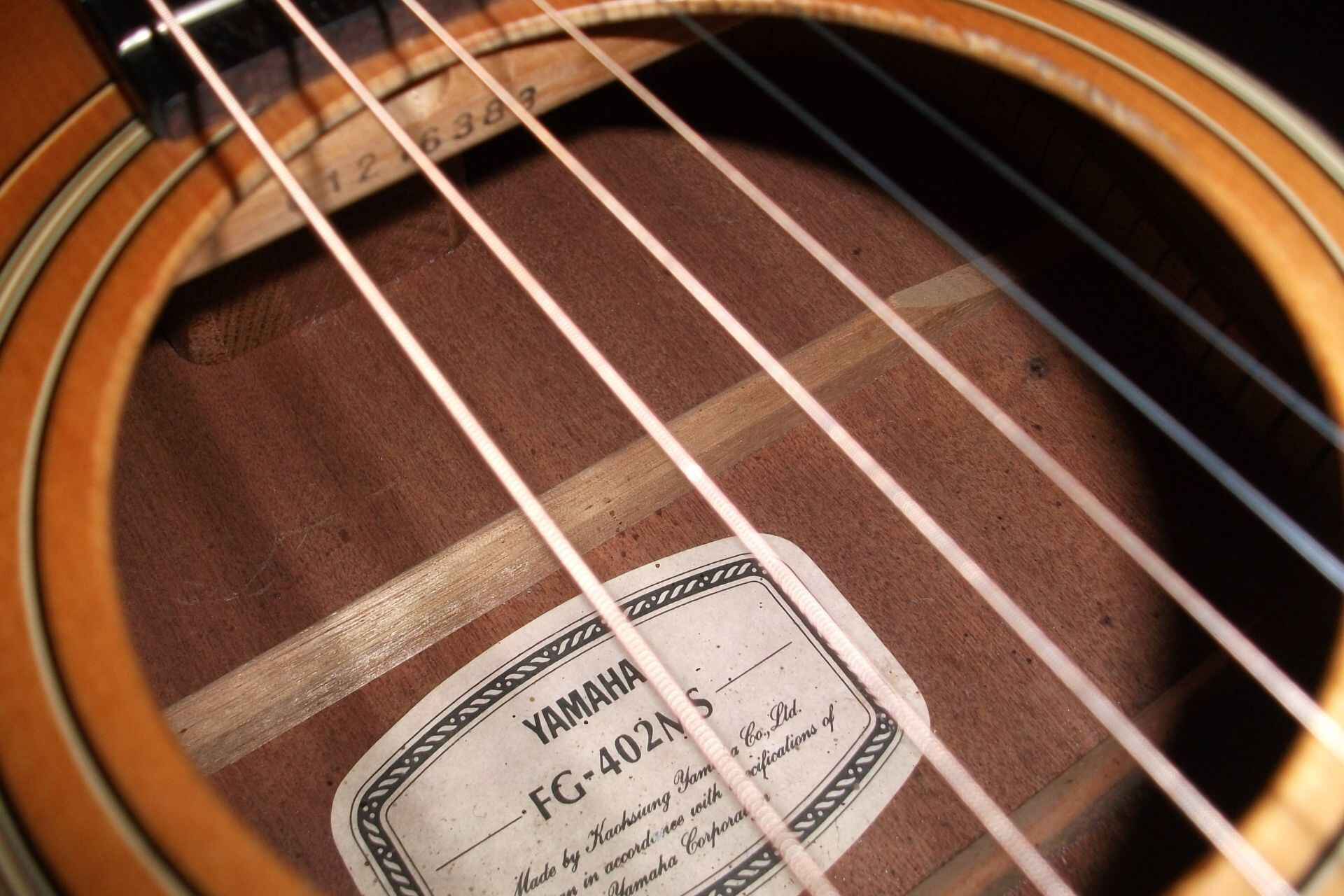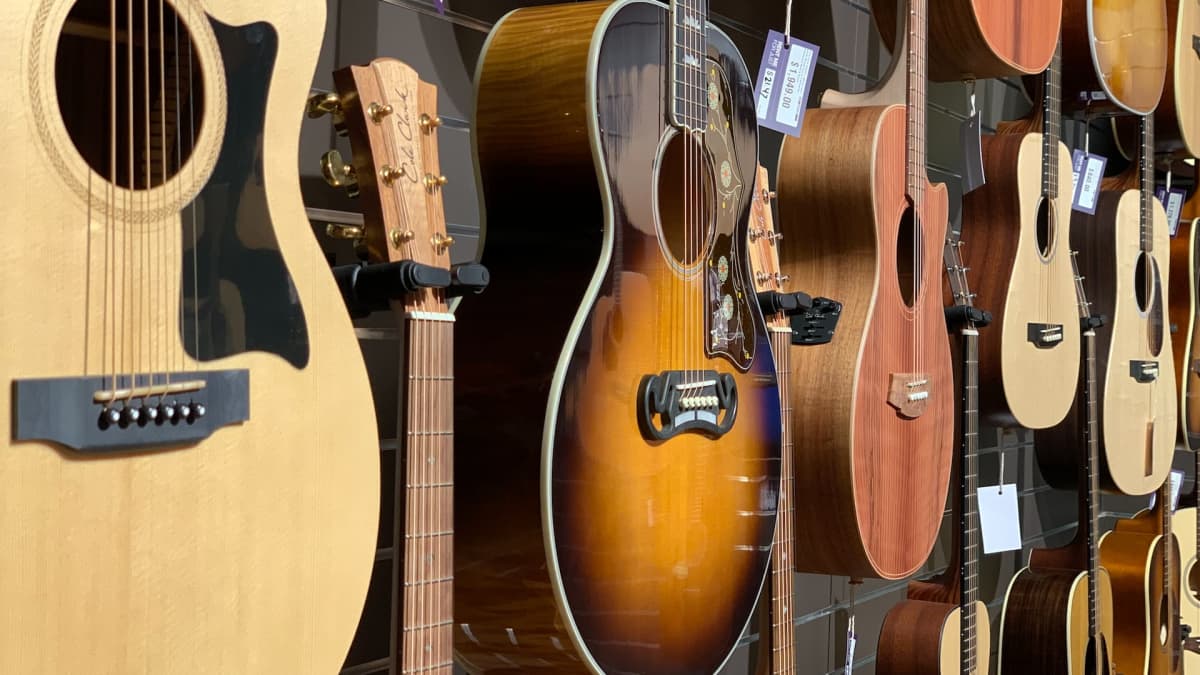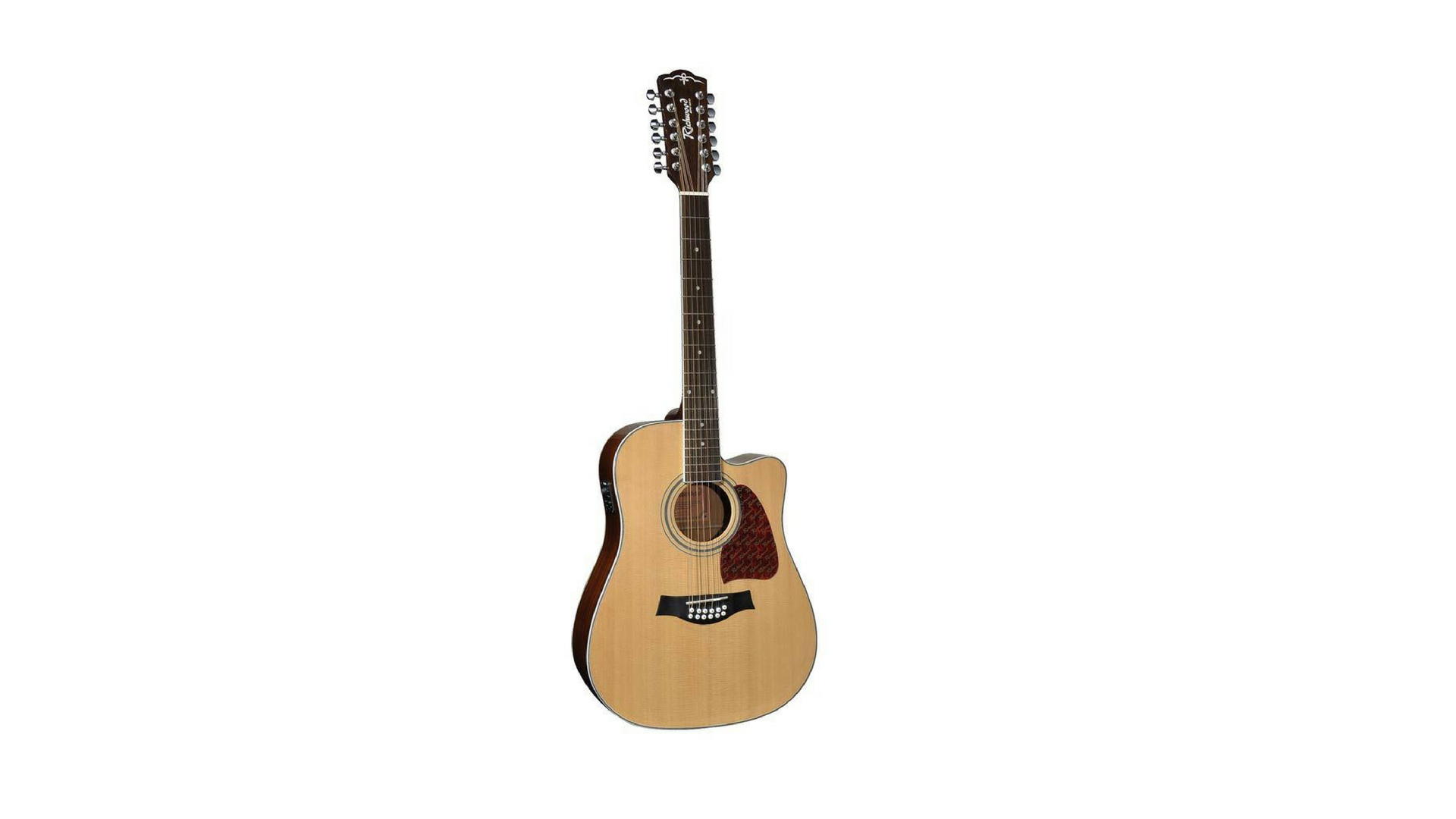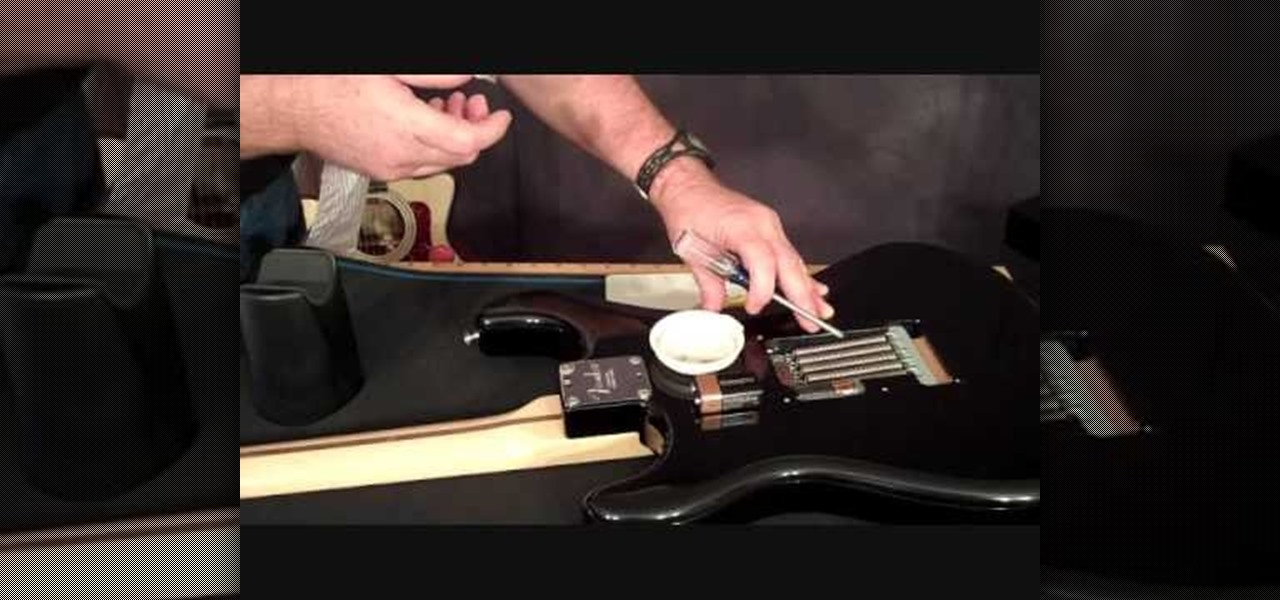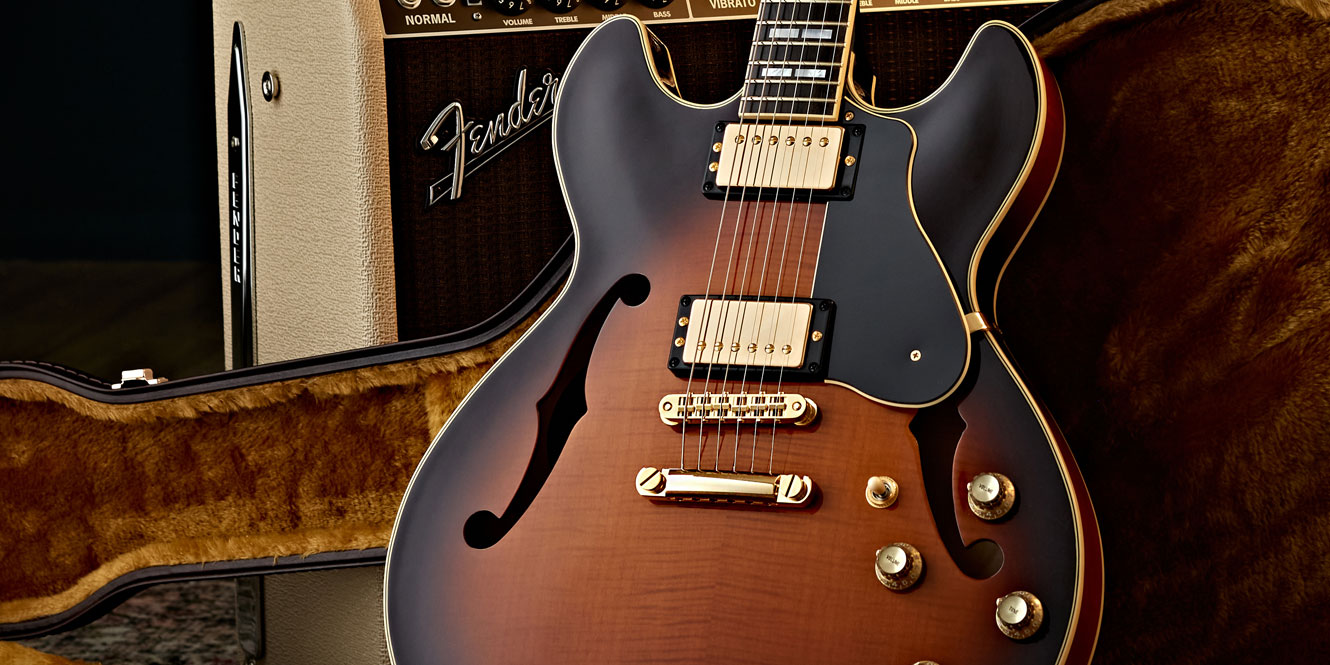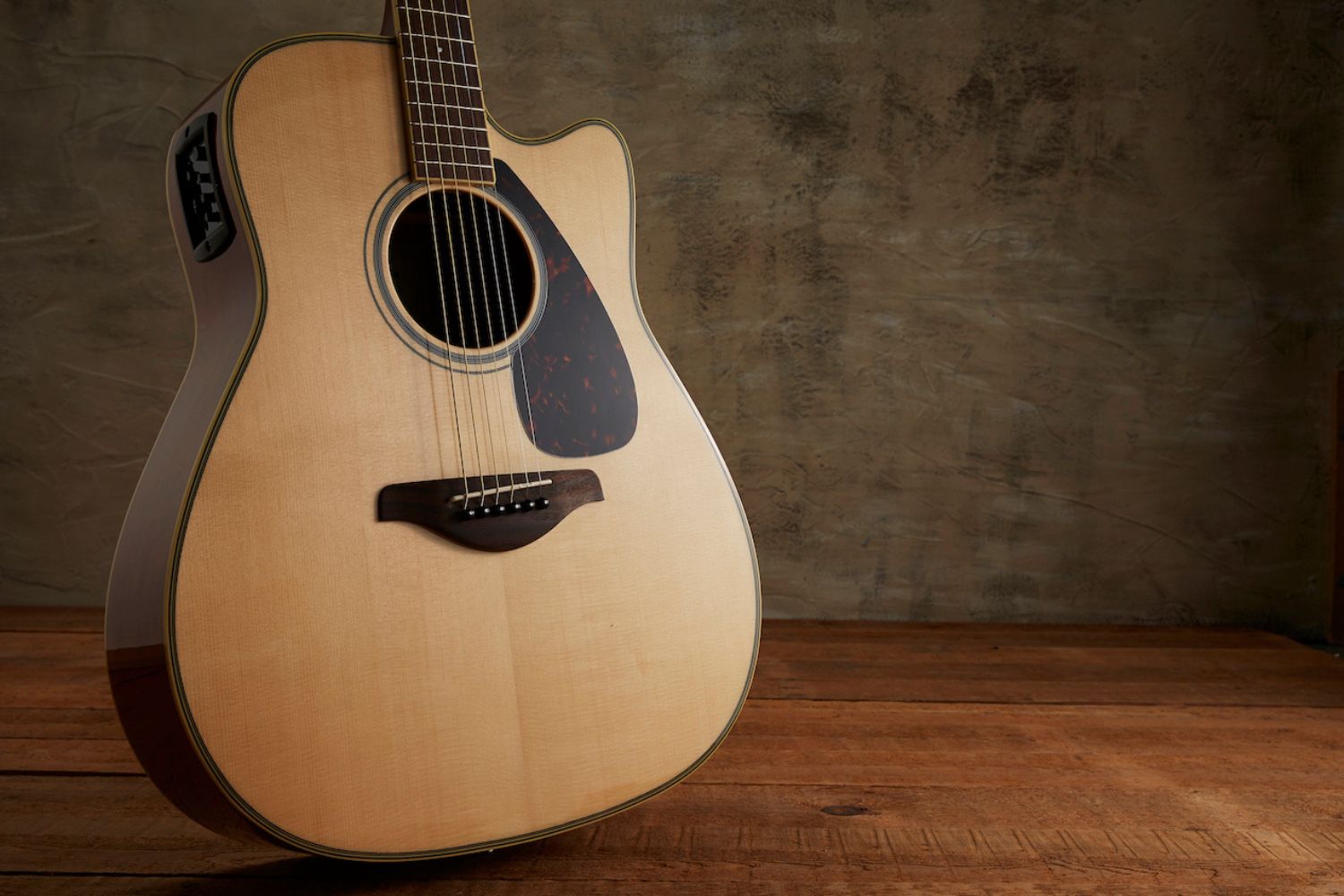Introduction
Welcome to this comprehensive guide on how to date a Fender acoustic guitar. Whether you’re a collector, a musician, or simply curious about the age of your Fender guitar, knowing how to determine its production date is essential. Dating a Fender acoustic guitar not only gives you valuable insight into its history but also helps you identify its model and estimate its value.
Fender is a well-known name in the world of guitars, renowned for producing high-quality instruments with a rich musical heritage. Dating a Fender acoustic guitar can be an exciting journey as you uncover its origins and discover the unique characteristics that contribute to its sound and playability.
In this guide, we will explore various methods to date your Fender acoustic guitar. We will discuss how to identify the model and determine the year of production. Additionally, we will delve into researching the serial number, dating vintage Fender acoustic guitars, and understanding their value in today’s market.
By the end of this guide, you will be equipped with the knowledge and resources to accurately determine the age of your Fender acoustic guitar. Whether you have a vintage piece or a more recent model, this information will allow you to appreciate its history and potentially increase its value if you decide to sell it in the future.
So, let’s dive into the fascinating world of Fender acoustic guitars and discover the secrets behind their age and craftsmanship!
The Importance of Dating a Fender Acoustic Guitar
When it comes to owning a Fender acoustic guitar, knowing its production date is more than just a trivia fact. Dating your Fender guitar provides valuable information that can impact its value, authenticity, and historical significance. Here are some reasons why dating a Fender acoustic guitar is important:
1. Authentication: Dating a Fender acoustic guitar allows you to authenticate its origin. Fender has a rich history, and over the years, there have been numerous replicas and counterfeit guitars in circulation. By identifying the production date, you can ensure that you have an authentic Fender instrument.
2. Model Identification: Fender has produced a wide range of acoustic guitar models over the years. Dating your Fender acoustic guitar can help you determine its specific model. This knowledge can be useful for collectors, enthusiasts, and musicians looking for specific tonal characteristics or features associated with a particular model.
3. Understanding the Evolution: Fender has made changes to its acoustic guitar designs and features over time. Dating your Fender acoustic guitar allows you to trace its evolution and understand the different variations that were introduced during specific years. This knowledge can be fascinating and help you appreciate the craftsmanship and innovation behind these instruments.
4. Estimating Value: The age and historical significance of a Fender acoustic guitar can significantly affect its value. Vintage guitars, especially those from specific eras or limited editions, tend to be highly sought after by collectors. By dating your Fender acoustic guitar, you can get a better idea of its potential market value if you decide to sell it or insure it.
5. Appreciating the Legacy: Fender acoustic guitars have played a significant role in the music industry, shaping the sound of countless songs and performances. By dating your Fender acoustic guitar, you can connect with its rich heritage and appreciate the legacy behind these iconic instruments.
6. Establishing Provenance: If you have a vintage Fender acoustic guitar with a known production date, it adds to its provenance. Provenance refers to the documented history and ownership of an item. Having a confirmed production date can enhance the story and value of your Fender guitar.
By dating your Fender acoustic guitar, you can unlock a wealth of information about its authenticity, model, history, and value. Whether you’re a guitar enthusiast, collector, or musician, understanding the importance of determining the age of your Fender guitar will deepen your appreciation for these remarkable instruments.
How to Identify the Model
Identifying the model of your Fender acoustic guitar is an essential step in determining its age and characteristics. Fender has produced a wide range of acoustic guitar models over the years, each with its own unique design features and specifications. Here are some methods to help you identify the model of your Fender acoustic guitar:
1. Headstock Logo: The headstock of a Fender acoustic guitar often displays the brand logo, which can provide valuable clues about the model. Pay close attention to the font style and design of the logo, as Fender has made changes to its logos over time. Comparing the logo on your guitar to vintage Fender catalogs or online resources can help you narrow down the potential model.
2. Body Shape: Fender acoustic guitars come in various body shapes, including dreadnought, concert, parlor, and jumbo. Familiarize yourself with the different body shapes associated with Fender models. Inspect the body of your guitar to determine its shape and compare it to known Fender models with similar body styles.
3. Soundhole Design: The design of the soundhole in Fender acoustic guitars can provide further clues about the model. Look for distinctive shapes or patterns around the soundhole, such as rosettes or inlays. These designs can vary depending on the model and production year.
4. Pickguard: Pay attention to the pickguard on your Fender acoustic guitar. Some models may have a unique pickguard shape or design that can help you identify the model. Additionally, the absence or presence of a pickguard can also be indicative of certain Fender models.
5. Serial Number: While the serial number is primarily used for dating purposes, it can also provide information about the model. Some Fender guitars have specific serial number patterns associated with particular models or series. Researching the serial number in combination with other characteristic features can help you pinpoint the model.
6. Consult Fender Resources: Fender provides comprehensive resources on their website and in vintage catalog archives. Browse through these resources to familiarize yourself with the various models and their distinguishing features. Comparing your guitar to catalog illustrations and specifications can give you valuable insights into its model.
Identifying the model of your Fender acoustic guitar may require a combination of visual examination, research, and comparison with available resources. By considering the headstock logo, body shape, soundhole design, pickguard, serial number, and consulting Fender resources, you can narrow down the potential model of your guitar.
Once you have identified the model, you can delve deeper into its history, production era, and specific features. This information will be invaluable when dating your Fender acoustic guitar and understanding its unique qualities.
How to Identify the Year of Production
Pinpointing the year of production is crucial when dating a Fender acoustic guitar. Knowing the production year provides valuable insights into the guitar’s age, historical context, and potential value. While there are multiple methods to determine the year of production, here are some common approaches:
1. Serial Number: The serial number is a primary indicator of a Fender guitar’s age. Each Fender acoustic guitar has a unique serial number engraved or stamped on the back of the headstock or the neck plate. Consult Fender’s official resources, such as their website or vintage catalog archives, to find the corresponding year for your serial number. Keep in mind that serial number formats and dating systems have varied over the years, so accurate research is essential.
2. Neck Stamp: Fender guitars manufactured in the 1970s and earlier often featured a stamped date on the guitar’s neck. This stamp can provide a specific date or a range of dates when the guitar’s neck was produced. Carefully examine the neck near the heel or the neck pocket to locate this stamp. Decoding the stamp code using Fender’s resources can help you determine the year of production.
3. Potentiometer Codes: Fender guitars equipped with potentiometers (pots) might have date codes on them. These codes, usually found on the back or side of the potentiometer, can reveal the manufacturing date. By deciphering the date codes using available resources, you can estimate the year when your Fender guitar’s electronics were manufactured, offering a clue to its production date.
4. Body Date Markings: In some instances, Fender guitars may have date markings on the body. These markings can be found in the neck pocket, pickup routing cavity, or control cavity. They typically indicate when specific parts or assemblies were completed or installed during the guitar’s production process. Researching these date markings can provide insight into the guitar’s production year.
5. Features and Specifications: Changes in features and specifications can also help identify the production year. Research the specific characteristics associated with different Fender models and the time periods when those features were introduced or discontinued. This exploration, combined with visual inspection, can offer clues about your guitar’s age.
Remember, determining the year of production for a Fender acoustic guitar requires careful research, examination of specific markings, and comparison with reliable resources. Serial numbers, neck stamps, potentiometer codes, body date markings, and notable features can all be valuable indicators for identifying the production year.
By accurately dating your Fender acoustic guitar, you gain valuable information that illuminates its historical context, potential value, and overall significance in the Fender lineup. This knowledge enhances your appreciation for the instrument’s craftsmanship and allows you to better understand its place in the timeline of Fender’s guitar production.
Researching the Serial Number
Researching the serial number of your Fender acoustic guitar is a crucial step in determining its age and other key information. The serial number serves as a unique identifier, allowing you to trace the guitar’s production history, model, and even specific features. Here are some tips on how to effectively research the serial number:
1. Consult Fender’s Official Resources: Fender provides valuable resources on their website that can help you decode and understand your guitar’s serial number. Visit the Fender website and navigate to the support or customer service section. Look for information related to serial number dating, vintage catalogs, or model history. Fender’s official resources often contain detailed information that can assist in identifying the production year and model of your guitar.
2. Vintage Catalogs and Reference Books: Vintage Fender catalogs and reference books are an excellent resource for researching serial numbers. These catalogs often include information about the guitar models produced during specific years, allowing you to match your serial number to a particular model. Check online marketplaces or bookstores for vintage Fender catalogs or books that provide serial number records and dating guides.
3. Online Guitar Forums and Communities: Online guitar forums and communities can be a wealth of information when researching Fender serial numbers. Engage with fellow enthusiasts, collectors, and experts who have knowledge and experience with dating Fender acoustic guitars. Post your serial number and ask for assistance in identifying its production year. Be sure to provide detailed photos and any additional information about your guitar to receive accurate feedback.
4. Fender Serial Number Databases: Several online databases specialize in compiling and organizing Fender serial numbers and their corresponding production years. These databases can be valuable resources for quickly looking up your serial number and obtaining information about your guitar. Take advantage of these databases by inputting your serial number and reviewing the results provided.
5. Professional Appraisal or Authentication: If you are unable to determine the age or authenticity of your Fender acoustic guitar through independent research, consider seeking a professional appraisal or authentication. There are experts and individuals with extensive knowledge of Fender guitars who can examine your instrument, including its serial number, and provide you with accurate identification and details about its production year.
By thoroughly researching the serial number of your Fender acoustic guitar through official resources, vintage catalogs, online communities, and specialized databases, you can unlock valuable information about its age, model, and features. This research enhances your understanding of the guitar’s history and provides you with a deeper appreciation for its place within the Fender legacy and the broader guitar community.
Dating Vintage Fender Acoustic Guitars
Dating vintage Fender acoustic guitars requires a combination of research, understanding of serial number dating systems, and knowledge of Fender’s production history. Vintage guitars often have unique features, specifications, and serial number formats that can help pinpoint their production years. Here are some key factors to consider when dating vintage Fender acoustic guitars:
1. Serial Number Dating: Fender has used different serial number systems over the years. Understanding these systems and their corresponding timeframes is essential in accurately dating vintage guitars. Research the serial number format used during the specific era of your guitar’s production. Consult official Fender resources, vintage catalogs, online databases, and knowledgeable experts to decode the serial number and identify its production year.
2. Body Design and Features: Vintage Fender acoustic guitars often have unique body designs and features specific to certain periods. Changes in body shape, bracing patterns, headstock logos, truss rod configurations, and other visual characteristics can aid in dating a vintage Fender guitar. Cross-reference these features with vintage catalogs, reference books, and online resources to narrow down the production year and gain insights into your guitar’s authenticity and history.
3. Potentiometer Codes and Neck Stamps: Some vintage Fender acoustic guitars may have additional date codes on potentiometers or neck stamps. These codes can offer further clues to determine the production year. Research the coding systems used during the relevant time period and compare them with the codes found on your guitar’s components.
4. Construction Techniques and Materials: Changes in construction techniques and materials used by Fender over the years can provide hints about the vintage of a guitar. Fender has experimented with different woods, bracing styles, finishes, and hardware. Understanding the nuances and changes in these details can help in estimating the production year of a vintage Fender acoustic guitar.
5. Historical Context and Documentation: Researching the historical context and documentation surrounding a specific vintage Fender guitar model can assist in dating it accurately. Explore Fender’s official records, vintage catalogs, newspaper articles, and interviews to gain insights into the guitar’s release date and production details. Historical documentation can validate certain features or specifications associated with specific years.
Dating vintage Fender acoustic guitars requires meticulous research, comparing features and specifications, and utilizing available resources. By integrating knowledge of serial number dating, body design features, potentiometer codes, construction techniques, and historical context, you can develop a comprehensive understanding of your vintage Fender guitar and confidently determine its production year.
Determining the Value of a Fender Acoustic Guitar
Determining the value of a Fender acoustic guitar is an important step, particularly if you’re considering buying or selling one. The value of a Fender acoustic guitar is influenced by factors such as its age, condition, rarity, model, and historical significance. Here are some key considerations when determining the value of a Fender acoustic guitar:
1. Age and Rarity: Vintage Fender acoustic guitars, especially those from limited production runs or specific eras, are often more valuable due to their rarity. Guitars from the 1950s and ’60s, for example, can command higher prices due to their historical significance and scarcity. Younger guitars, while not as rare, can still hold value if they possess unique features or are from sought-after production years.
2. Condition: The condition of a Fender acoustic guitar significantly affects its value. Well-preserved, original, and well-maintained guitars typically command higher prices compared to those with significant wear and tear or modifications. Cracks, dents, scratches, and any non-original parts or modifications can have an impact on the value. A guitar in excellent condition with all original components will generally have a higher value.
3. Model and Desirability: Certain models and designs by Fender are more desirable and sought after by collectors or guitar enthusiasts. Limited edition models, signature models, or guitars associated with renowned musicians can have higher values due to their collectability and perceived prestige. Researching the market demand for specific models can provide insights into their value.
4. Historical Significance: Fender guitars that played a vital role in music history or were associated with significant events or artists can hold elevated value. For example, a Fender acoustic guitar owned and played by a famous musician or used on a hit record may have a higher value due to its historical significance and provenance.
5. Market Trends: Keep track of the current market trends for Fender acoustic guitars to understand the fluctuating values. Factors such as collector demand, industry trends, and the overall economic climate can impact the value of guitars. Consult reputable sources, attend auctions, or consult with knowledgeable experts to stay updated on market trends.
6. Professional Appraisal: If you’re uncertain about the value of your Fender acoustic guitar, consider seeking a professional appraisal. An experienced guitar appraiser can thoroughly evaluate your guitar, taking into account all relevant factors, and provide you with an accurate assessment of its value.
Remember, determining the value of a Fender acoustic guitar is not an exact science and can vary depending on various factors. Conduct thorough research, consider market trends, assess the guitar’s condition and desirability, and seek professional advice when necessary to determine an accurate value for your Fender acoustic guitar.
Final Thoughts
Dating and determining the value of a Fender acoustic guitar is an exciting and rewarding process that allows you to delve into the rich history and craftsmanship of these iconic instruments. By following the methods outlined in this guide, you can accurately date your guitar, identify its model, and gain insights into its production year, features, and historical context.
Remember, research is key when dating a Fender acoustic guitar. Take advantage of official Fender resources, vintage catalogs, online communities, and experts in the field. By combining visual inspection, serial number decoding, and knowledge of construction techniques and design features, you can narrow down the production year and model of your guitar.
Understanding the value of your Fender acoustic guitar is essential, whether you’re looking to buy, sell, or simply appreciate its worth. Factors such as age, condition, rarity, model, and historical significance all contribute to the overall value of the instrument. Stay informed about market trends, seek professional appraisals when needed, and consider the guitar’s condition and desirability when assessing its value.
As you embark on your journey of dating and valuing your Fender acoustic guitar, embrace the opportunity to learn about the legacy of this renowned brand. Appreciate the craftsmanship, innovation, and musical heritage that Fender guitars embody. Whether you’re a guitar enthusiast, collector, or musician, the knowledge gained from dating and determining the value of your Fender acoustic guitar will enhance your experience and deepen your connection with these exceptional instruments.
Finally, remember that regardless of the age or value, the true worth of a Fender acoustic guitar lies in the joy and inspiration it brings. So strum those strings, create beautiful music, and continue to cherish your Fender acoustic guitar for years to come.







